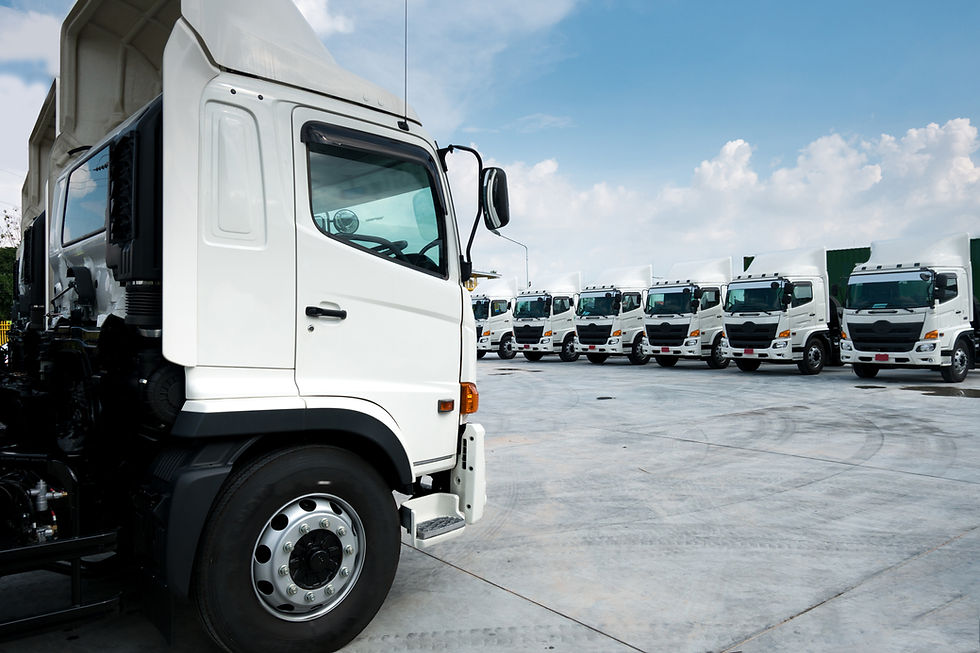5 Ways to Slash Your Trucking Insurance Costs and Boost Your Bottom Line
- Nick Vitali
- Jun 12, 2023
- 2 min read

In the highly competitive trucking industry, controlling costs is vital to ensuring a healthy bottom line. Trucking insurance is one area where expenses can quickly add up. However, by implementing strategic measures, you can effectively reduce your trucking insurance costs and enhance your profitability. In this blog post, we will explore five proven ways to achieve this, backed by reliable sources and industry insights.
1. Implement Driver Safety Programs:
Investing in driver safety programs can significantly impact your trucking insurance costs. By emphasizing safety protocols and training, you can reduce the frequency of accidents and decrease the likelihood of filing insurance claims. According to the Federal Motor Carrier Safety Administration (FMCSA), the implementation of safety programs can lead to a 25% to 35% reduction in crashes among commercial motor vehicles (CMVs). This translates into lower insurance premiums and improved overall risk management.
2. Leverage Technology:
The utilization of advanced technology can revolutionize your trucking operations and help mitigate risks, ultimately leading to reduced insurance costs. Integrating telematics systems, dashcams, and GPS tracking devices into your fleet can enhance driver behavior monitoring, reduce theft rates, and facilitate accurate accident reconstruction. Insurance companies often offer discounts to trucking companies that adopt these technologies, recognizing their ability to improve safety and minimize losses.
3. Maintain a Strong Safety Culture:
Building a strong safety culture within your organization is crucial for managing insurance costs. Encouraging open communication about safety concerns and conducting regular safety meetings can foster a proactive approach to risk prevention. Additionally, providing ongoing driver training and performance assessments can reinforce safe driving habits, reducing the chances of accidents and claims. Insurers value companies that prioritize safety, often offering discounted rates as a result.
4. Enhance Vehicle Maintenance and Inspection:
Regular vehicle maintenance and inspections are imperative for safe and reliable operations. Well-maintained trucks are less likely to experience mechanical failures or breakdowns that could lead to accidents or cargo damage. Implementing a comprehensive maintenance program, adhering to manufacturer guidelines, and keeping detailed records of inspections and repairs can demonstrate your commitment to vehicle safety. Insurance providers may reward such practices with lower premiums or deductible options.
5. Evaluate Insurance Policies Regularly:
Insurance needs evolve over time, and periodically reassessing your coverage can yield significant cost savings. Review your policies annually and consult with an experienced insurance agent who specializes in trucking. Discuss any changes in your operations, fleet size, or routes, and ensure that your coverage aligns with your current needs. By carefully evaluating and adjusting your policies, you can avoid unnecessary coverage gaps and potentially negotiate lower premiums.
Reducing trucking insurance costs is a critical aspect of maximizing profitability in the trucking industry. By implementing driver safety programs, leveraging technology, fostering a strong safety culture, enhancing vehicle maintenance, and regularly evaluating insurance policies, you can slash your insurance expenses and boost your bottom line. Remember, maintaining good relationships with your insurance provider and staying informed about industry trends can help you stay ahead of the game and ensure your trucking business remains successful in the long run.
Sources:
1. Federal Motor Carrier Safety Administration (FMCSA) - "Large Truck and Bus Crash Facts 2019": https://www.fmcsa.dot.gov/sites/fmcsa.dot.gov/files/docs/safety/data-and-statistics/461861/ltbcf-2019-early-release-5-5-2021.pdf



Comments